AWS Certified AI Practitioner
Guidelines for Responsible AI
Tools for Identifying Responsible AI Features
Welcome back, students. In this lesson presented by Michael Forrester, we explore the essential tools and methodologies for identifying responsible AI features. This article focuses on evaluating the fairness, explainability, and trustworthiness of your AI models using two key AWS services. We'll discuss critical factors such as bias detection, transparency, and ethical outputs to help ensure your AI initiatives remain responsible and compliant.
Below is an introductory slide emphasizing the need for fair, explainable, and trustworthy AI models, with special attention to bias, trustworthiness, and transparency:
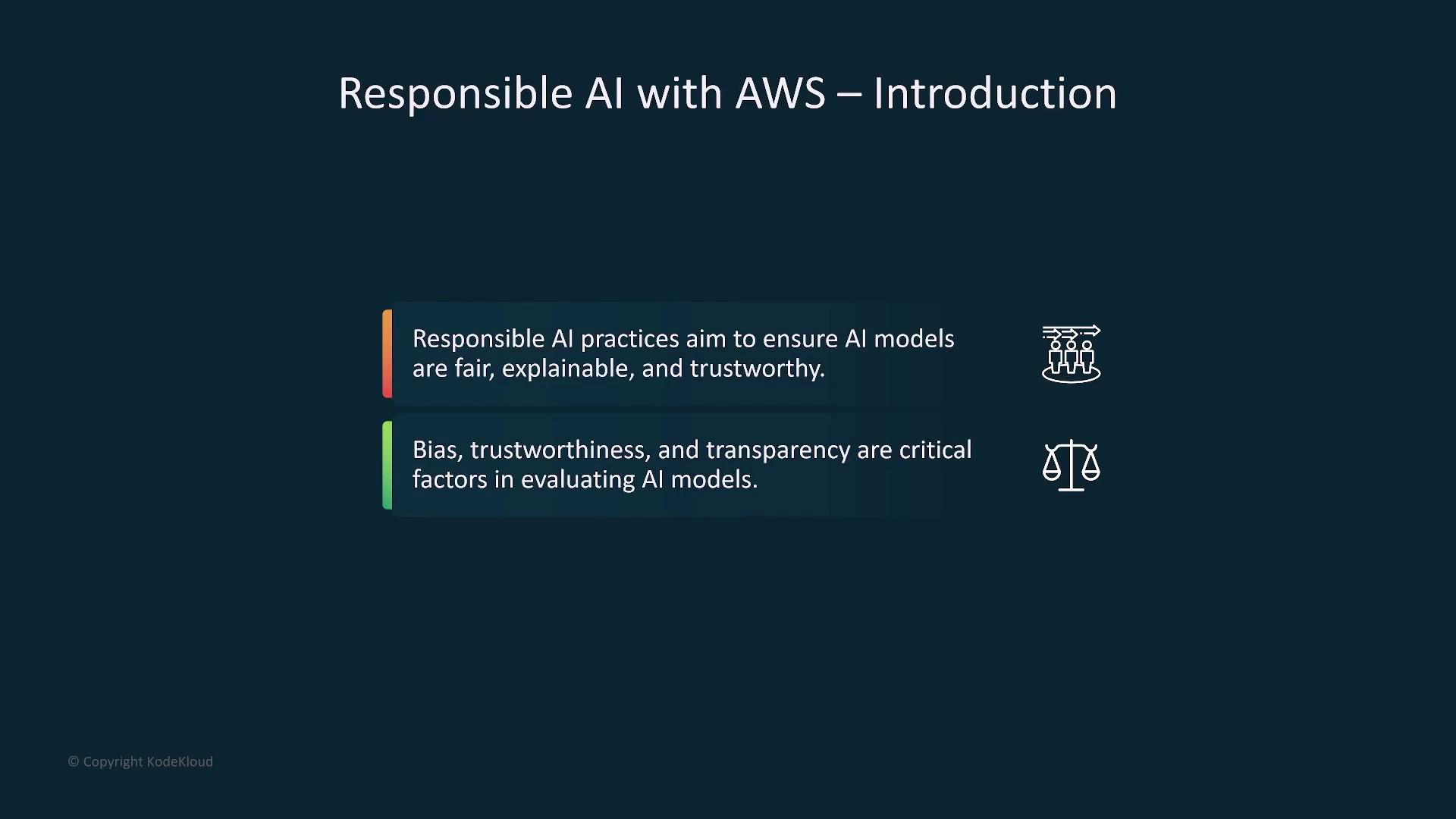
Amazon SageMaker Clarify
Amazon SageMaker Clarify is AWS's robust solution for detecting bias throughout the machine learning lifecycle. This service enhances model explainability during data preparation, after model training, and at deployment. It thoroughly analyzes datasets and model predictions to ensure that AI models operate without bias. By approximating the model's decision-making process, it provides insights into how different features influence outcomes.
For example, during data preparation, SageMaker Clarify can assess a dataset's balance. If a loan application dataset is skewed toward middle-aged individuals while underrepresenting younger or older applicants, the model may underperform for those groups, indicating a bias issue. After training, Clarify computes bias metrics to identify performance differences across demographics, such as a model disproportionately rejecting loan applications from women compared to men.
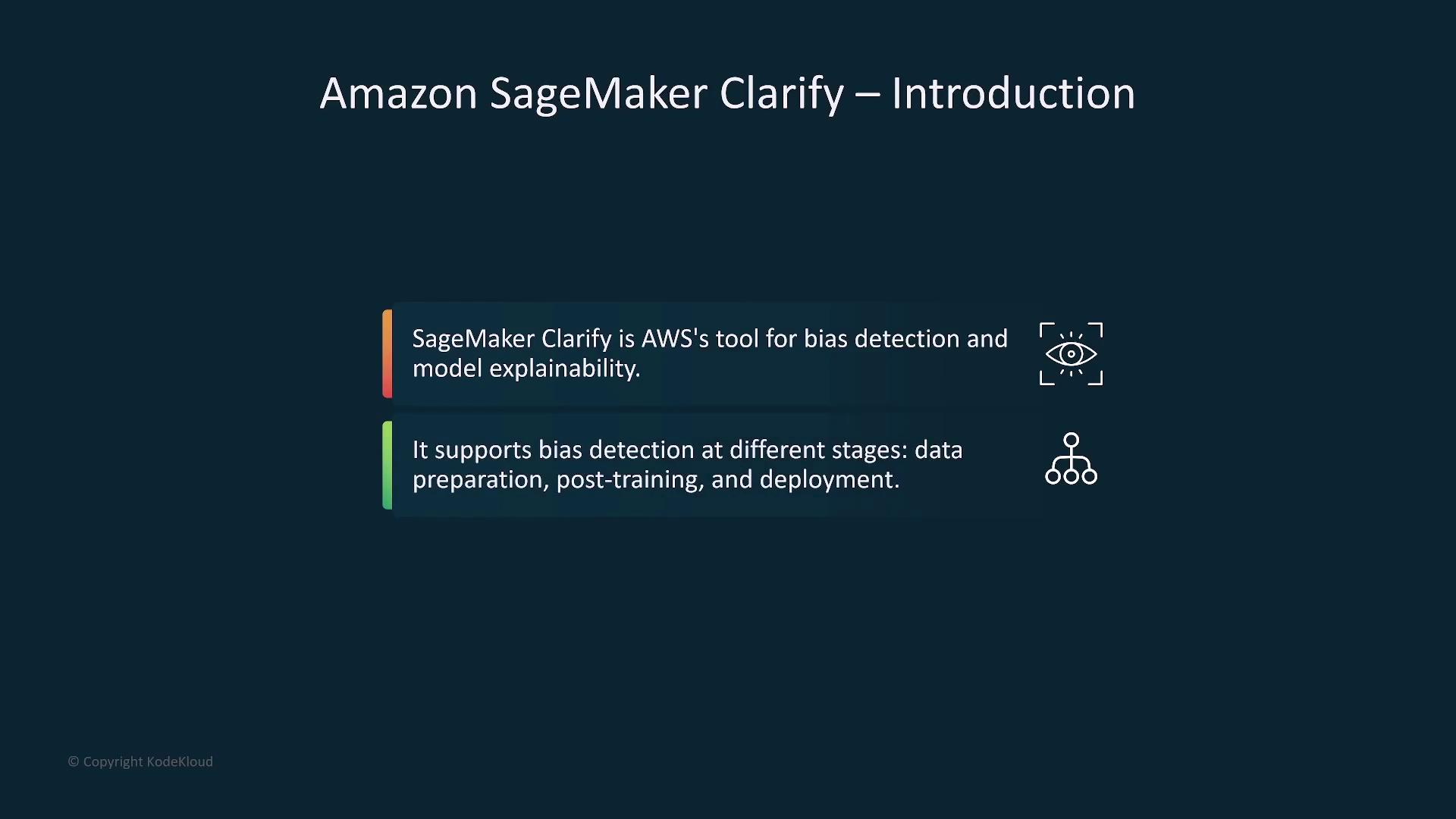

Once your model is deployed, SageMaker Clarify calculates advanced bias metrics such as demographic disparity, recall differences, and accuracy differences. It also offers feature attribution scores, which reveal the impact of individual features on model decisions.
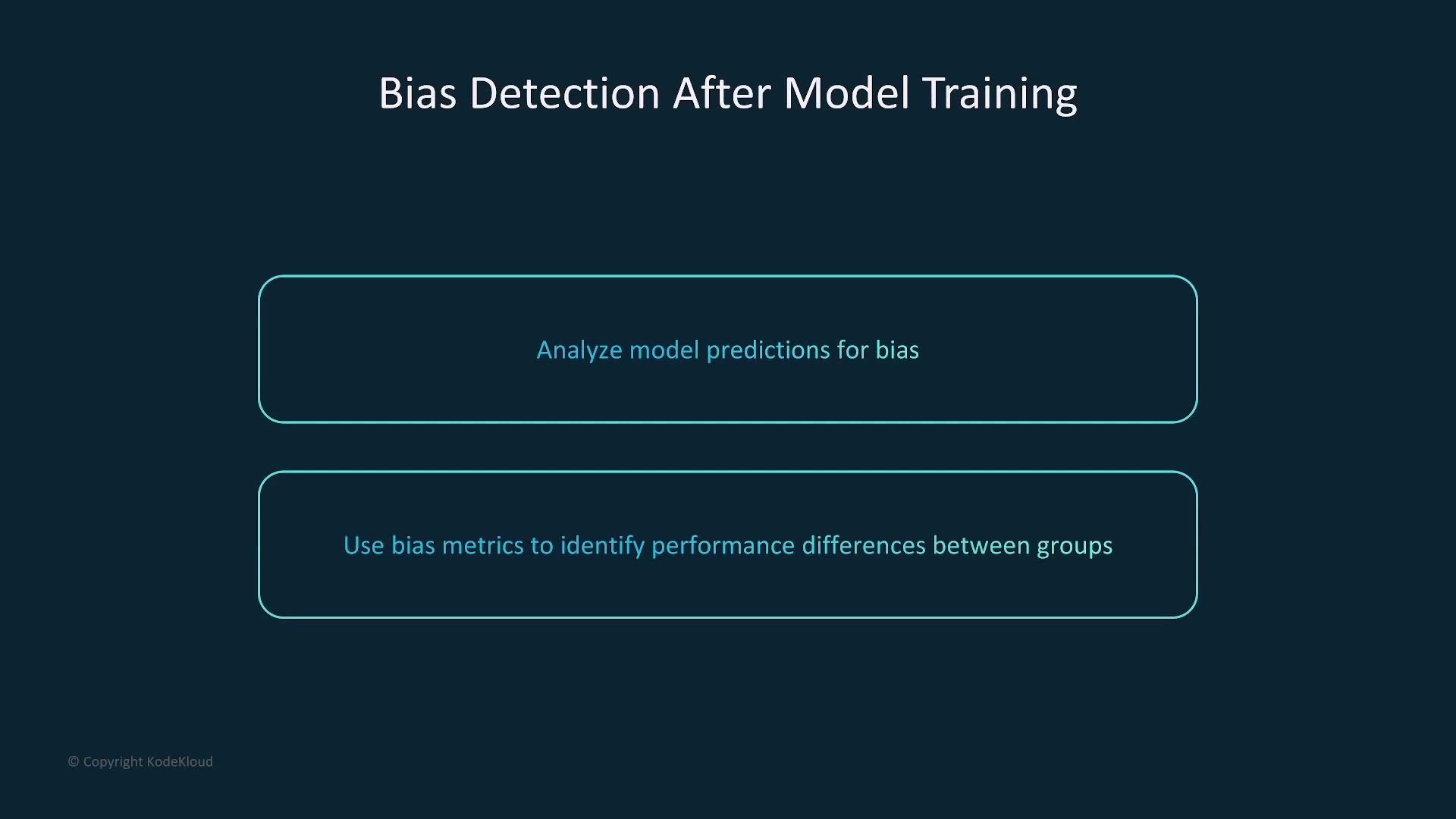
Additionally, SageMaker Clarify provides explainability by acting as an intermediary that treats the trained model as a black box. It evaluates input-output relationships without exposing the model's internal logic. This approach is particularly valuable in regulated industries where auditability and transparency are paramount.
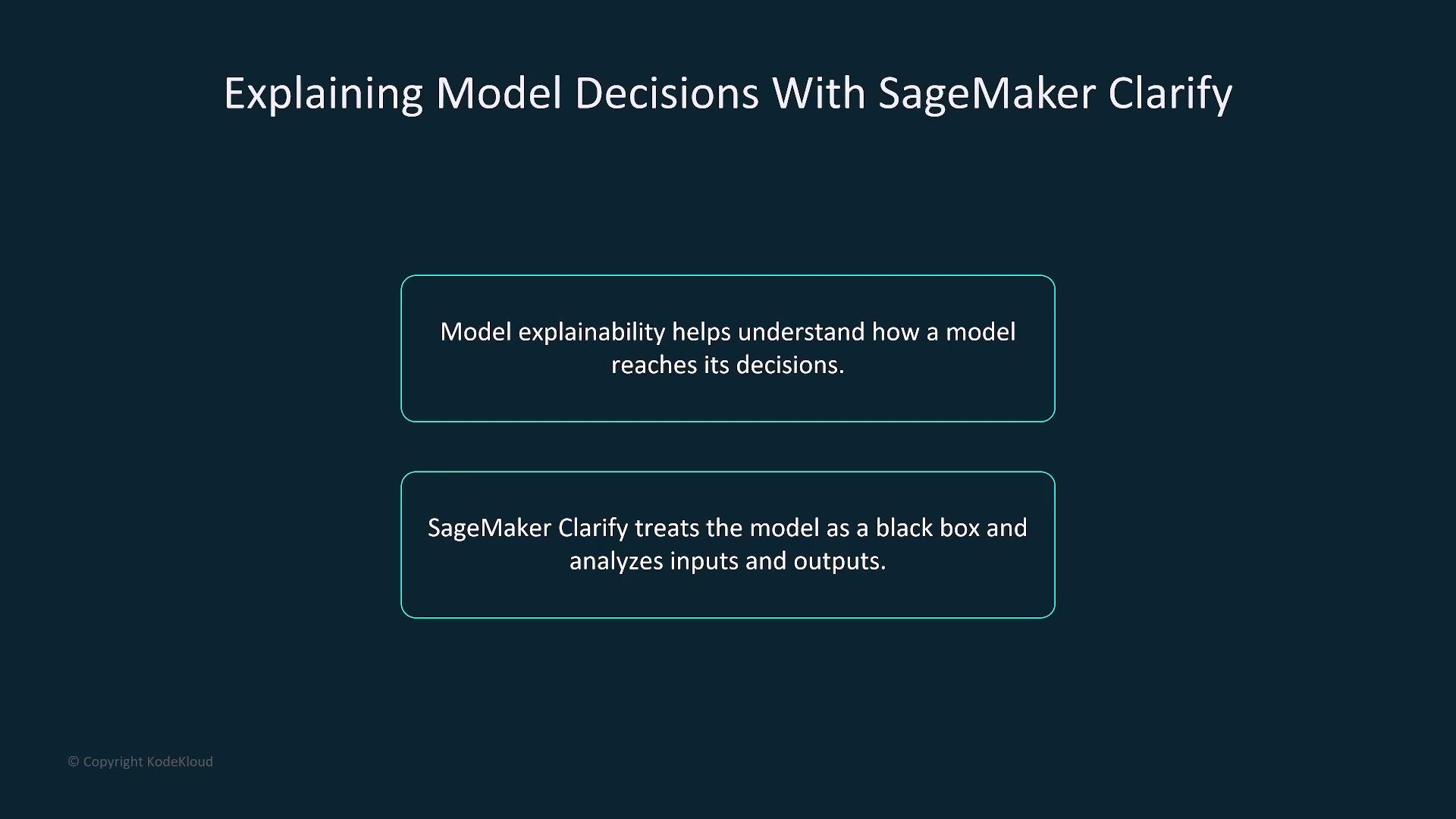
Clarify operates through processing jobs that analyze datasets and model outputs stored in S3 buckets. These jobs calculate various bias metrics and feature attribution scores, with the results being saved back to an S3 bucket. The visual reports generated from these analyses empower users to assess the transparency and bias characteristics of their AI models.
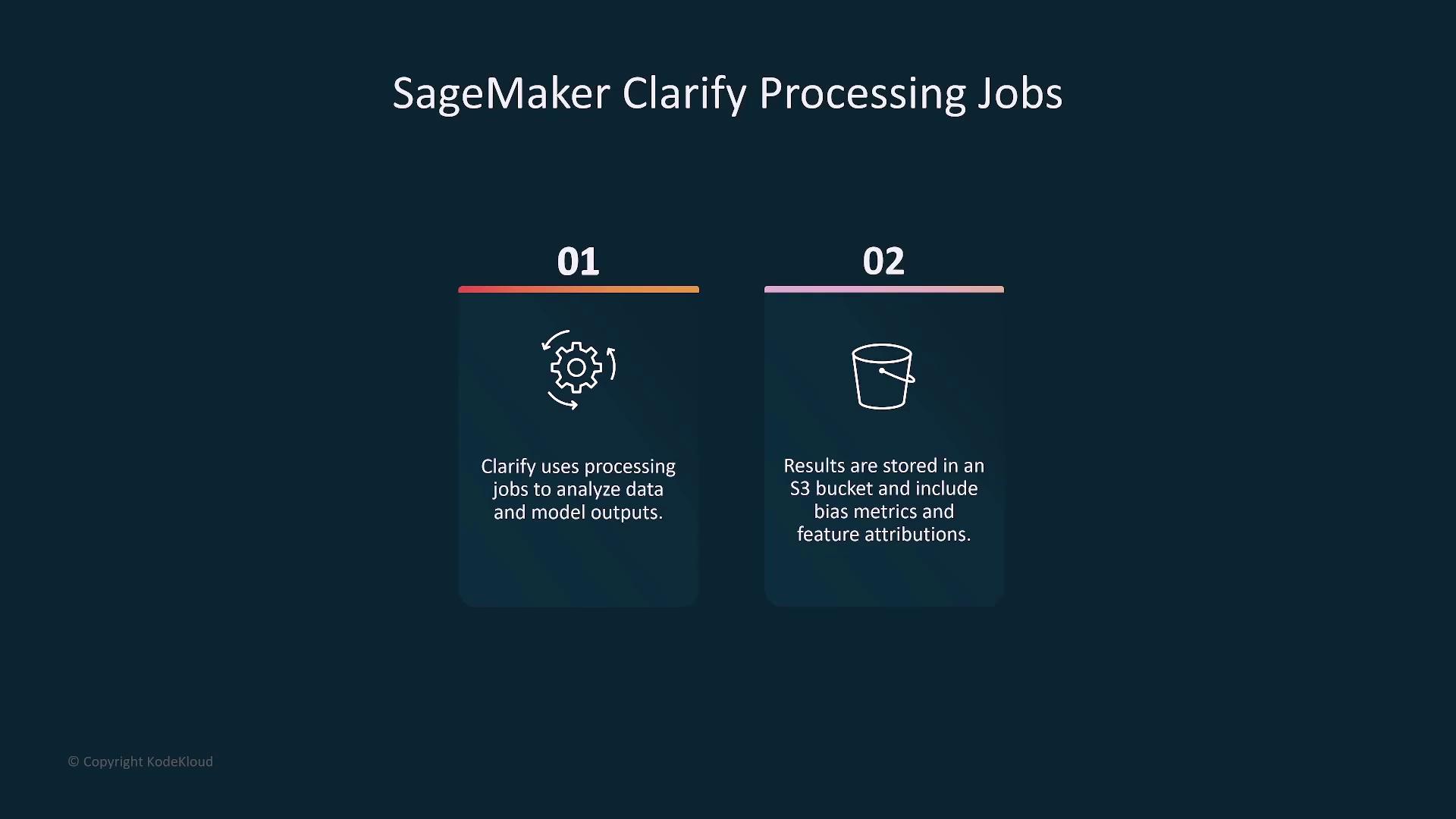
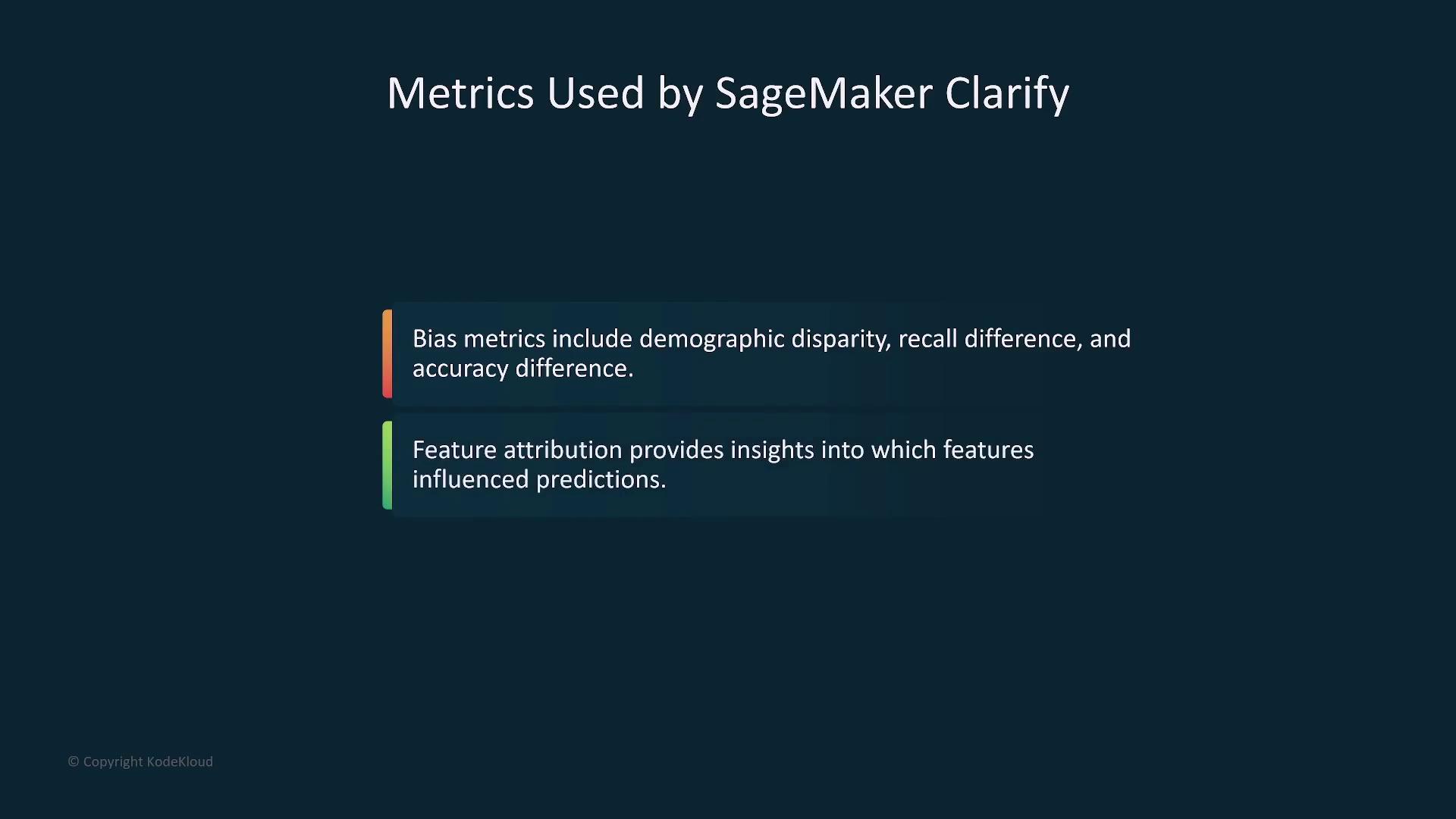
Exam Preparation Tip
SageMaker Clarify is a key topic on the AWS Certified AI Practitioner exam. Familiarize yourself with its capabilities in bias detection and model explainability.
Guardrails for Amazon Bedrock
Guardrails for Amazon Bedrock is the second service we explore. This security tool enforces strict output constraints to ensure that model outputs adhere to responsible and ethical standards. It plays a vital role in mitigating issues such as demographic disparity, which is essential for applications like loan approvals where biased decisions can have serious repercussions.
With Guardrails, you can define rules to filter out sensitive or inappropriate content and ensure that model outputs remain within ethical boundaries. By establishing these rules, the service minimizes the risk of unethical outcomes, helping maintain responsible AI practices.
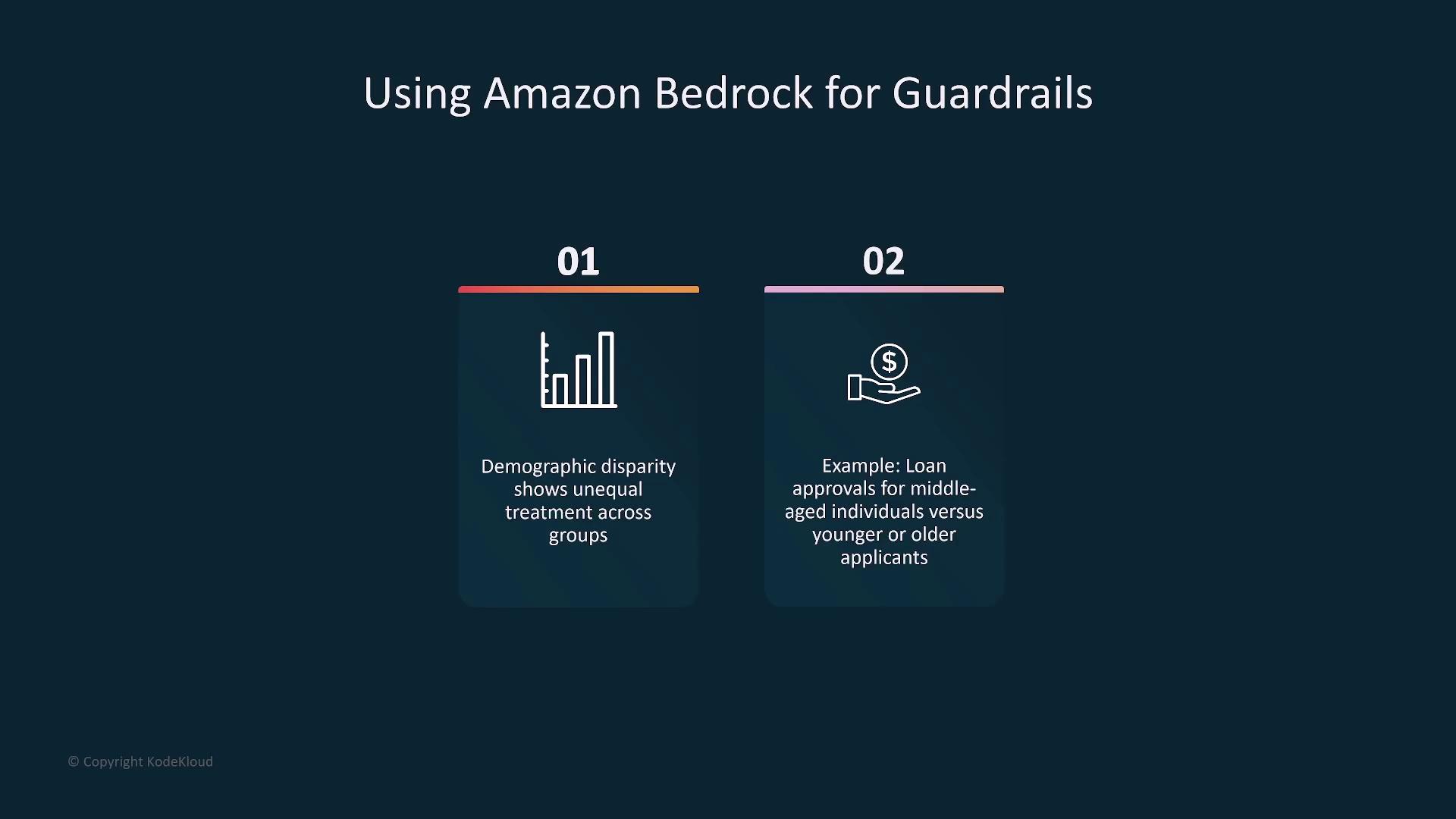
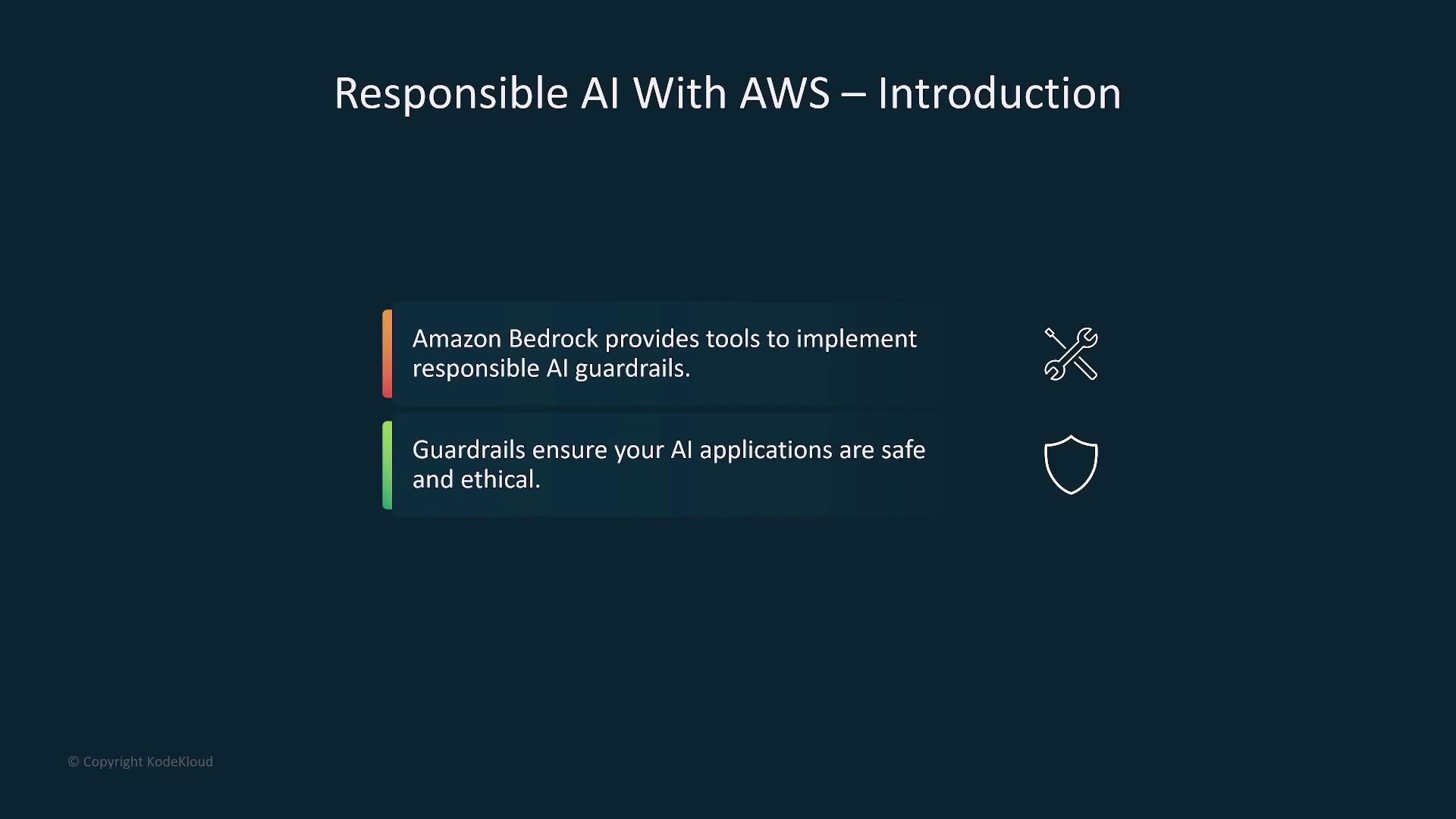
Guardrails for Amazon Bedrock serves as a safeguard, ensuring that outputs are scrutinized and restricted from any potentially harmful or biased results. This enhances the safety, ethical integrity, and regulatory compliance of AI applications.
Conclusion
In summary, AWS offers powerful tools to support responsible AI practices. Amazon SageMaker Clarify assists in detecting bias and enhancing model explainability, while Guardrails for Amazon Bedrock ensures that your model outputs remain ethical and compliant. Both services are crucial for building fair, transparent, and trustworthy AI models.
We hope you found this lesson informative. Thank you for reading, and we look forward to exploring more advanced topics in our next article.
Additional Resources
Watch Video
Watch video content